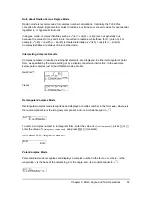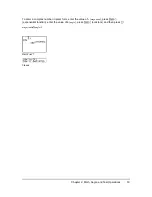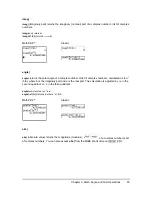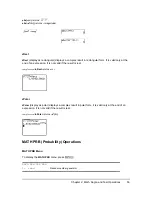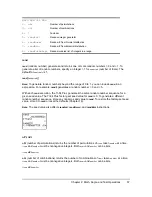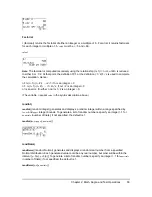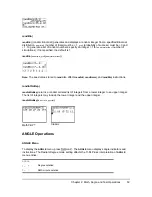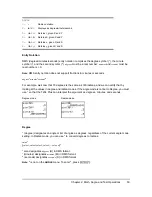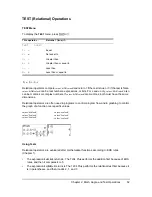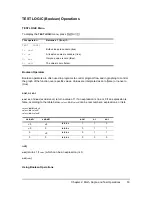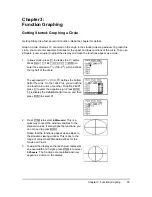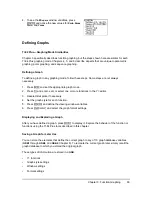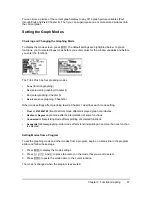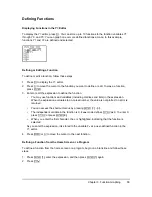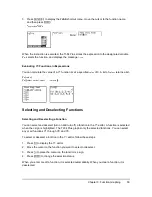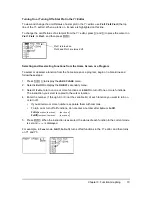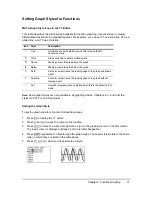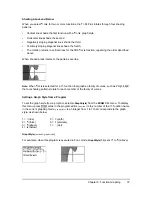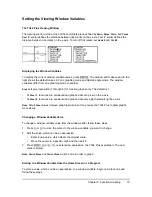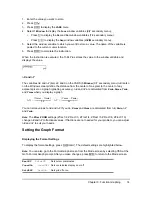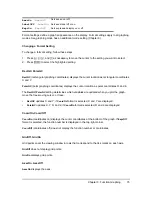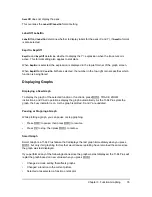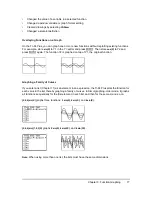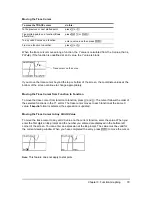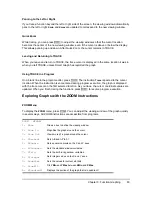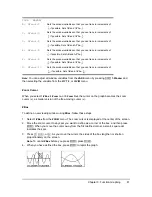
Chapter 3: Function Graphing
66
Defining Graphs
TI-84 Plus—Graphing Mode Similarities
Chapter 3 specifically describes function graphing, but the steps shown here are similar for each
TI-84 Plus graphing mode. Chapters 4, 5, and 6 describe aspects that are unique to parametric
graphing, polar graphing, and sequence graphing.
Defining a Graph
To define a graph in any graphing mode, follow these steps. Some steps are not always
necessary.
1. Press
z
and set the appropriate graph mode.
2. Press
o
and enter, edit, or select one or more functions in the Y= editor.
3. Deselect stat plots, if necessary.
4. Set the graph style for each function.
5. Press
p
and define the viewing window variables.
6. Press
y .
and select the graph format settings.
Displaying and Exploring a Graph
After you have defined a graph, press
s
to display it. Explore the behavior of the function or
functions using the TI-84 Plus tools described in this chapter.
Saving a Graph for Later Use
You can store the elements that define the current graph to any of 10 graph database variables
(
GDB1
through
GDB9
, and
GDB0
; Chapter 8). To recreate the current graph later, simply recall the
graph database to which you stored the original graph.
These types of information are stored in a
GDB
.
•
Y= functions
•
Graph style settings
•
Window settings
•
Format settings
4. To see the
ZSquare
window variables, press
p
and notice the new values for
Xmin
,
Xmax
,
Ymin
, and
Ymax
.

